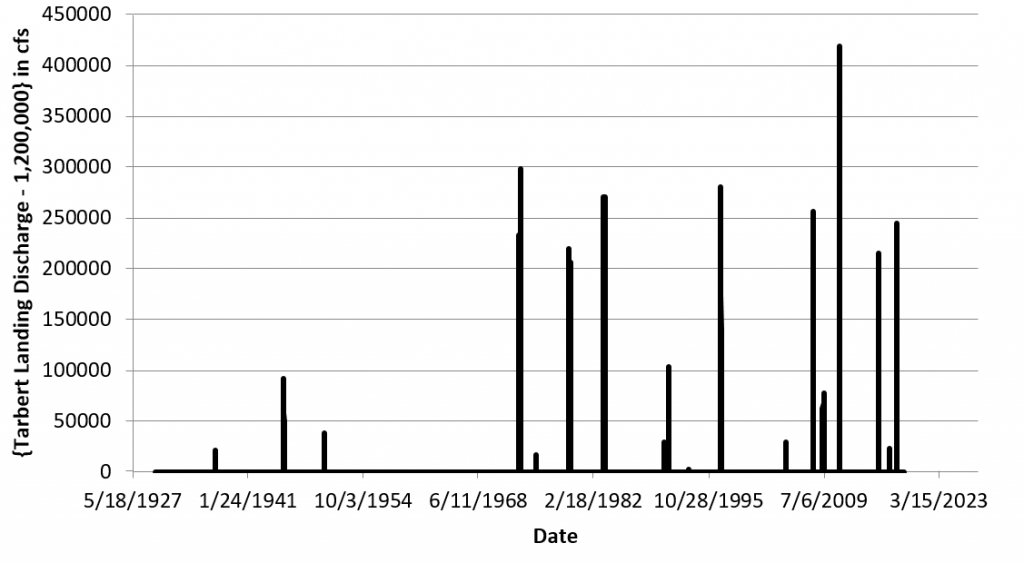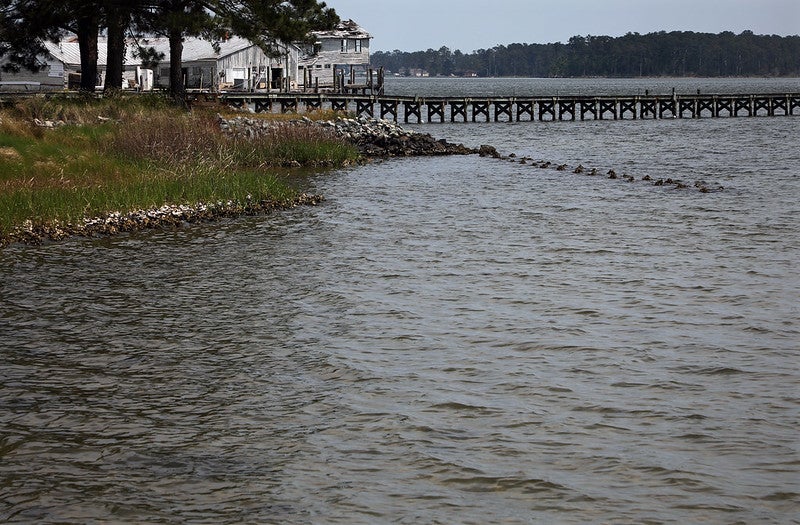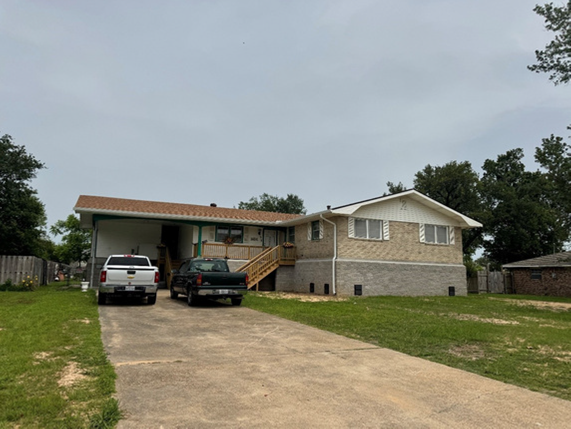Repeat opening of Bonnet Carré Spillway is a sign we need to manage rivers differently
Earlier this month, the U.S. Army Corps of Engineers opened the Bonnet Carré Spillway north of New Orleans for the second time this year to relieve pressure on the Mississippi River levees and protect communities in south Louisiana from catastrophic flooding.
It was the first time in the structure’s nearly century-old existence that it had been opened twice in the same year. When the Corps opened the spillway in February, it was the first opening in back-to-back years.
Air boat out at Bonnet Carre during the second opening this year. pic.twitter.com/kkeQvcdESU
— Corps of Engineers New Orleans (@USACENOLA) May 10, 2019
Corps Maj. Gen. Richard Kaiser recognized this unprecedented occurrence in response to the wettest period in 124 years, saying, “This is not business as usual.” What was designed as an emergency flood control system has increasingly become a default safety valve, as climate change and increased precipitation throughout the Mississippi River Valley only further stress the system.
This is a sign that we need to re-think how we manage our rivers and revisit operations of a system designed nearly a century ago.
The country’s largest drain
The Mississippi River Valley is massive, draining one-third of the continental United States, and is the world’s third-largest drainage basin. All that water flows down to Louisiana. As extreme weather and precipitation increase, areas across the Mississippi River Valley become more vulnerable to flooding.

The Bonnet Carré Spillway was constructed in response to the Great Flood of 1927 as part of the Mississippi River and Tributaries Project. The structure sends river water into nearby Lake Pontchartrain to relieve pressure on levees and prevent flooding. At a flow 250,000 cubic feet per second (cfs), its discharge is equivalent to three Niagara Falls.
The most recent opening marks the 14th time the spillway has been operated since its construction and the fourth time in the last four years. Analysis indicates that the time between openings has decreased from an average of every seven years to every 3.8 years since 1929, and is still decreasing.

So how does Louisiana confront a future with more water flowing down from the entire Mississippi River Valley as well as up from rising seas and storm surge of the Gulf of Mexico?
A new water management mindset
Across the Mississippi River watershed, there needs to be a concerted effort to better manage the river. This includes restoring wetlands and riparian buffers to improve water filtration and flood mitigation and giving the river more space to flow between the levees. It’s time we start managing the Mississippi River as the resource it truly is. Share on X
In Louisiana, it means managing the river for its restoration potential rather than just for flood protection and navigation and delivering land-building river sediment to wetlands that will cease to exist otherwise.
Through its Coastal Master Plan, Louisiana is advancing projects like the Mid-Barataria and Mid-Breton Sediment Diversions, which will be built into the river levees to move sediment from the river to wetlands to build and sustain tens of thousands of acres over time. These projects are vital to communities in and around New Orleans that need this wetland buffer to protect them from hurricanes and sea level rise, but also to a number of wildlife species that depend on Louisiana’s diverse ecosystems and estuaries.
During flooding and openings of the spillway, we are reminded of the incredible force and power of the Mississippi River.
Rather than simply focusing on the river as a foe that must be tamed, we need to treat it as an asset that many other places, particularly those on coasts vulnerable to sea level rise, lack. It’s time we start managing the Mississippi River as the resource it truly is.













3 Comments
Water from our river,s are necessary , any change in course of water flow does have a negative effect for large areas. Do we make these changes ?If we do is the gain better than the loss. I dont know! Our attemps to change the natural occurrence sometimes come back to bite us on the backside.Nature when left alone brings out our natural ability to survive and even flourish with respect to what nature throws at us.Kenneth Ford. 200 Uncle Johnie rd. Jonesville, Louisiana 71343 . P.S. Have lived here my entire life. And and have survived numerous floods for 72 years.. When it floods we move to the hills, to camp in tents. When the water recedes we move back clean up and rebuild if necessary.Sometimes with the help of our government sometimes without as cost of flood insurance rises above our ability to pay. Thank you for listening to the ramblings of an old man. No complaints: ( Just a survivor)
The Corp needs to learn WHEN to use the spillways and not jeopardize the lives and property’s of the people who live outside of the already weakened levee system that could fail at any time or god forbid be a target for another terrorist attack. The trigger points for opening the spillways need to be lowered , they need to be opened sooner and bleed the water off not wait till the last minute then blast everything in its path it’s not rocket science !!!!
I have lived in N.O. 57 years and I would like you to tell me how much the the sea has risen? We in Louisiana are seeing whats called subsidence not ocean rise so stop acting like the sea is rising when it is not!